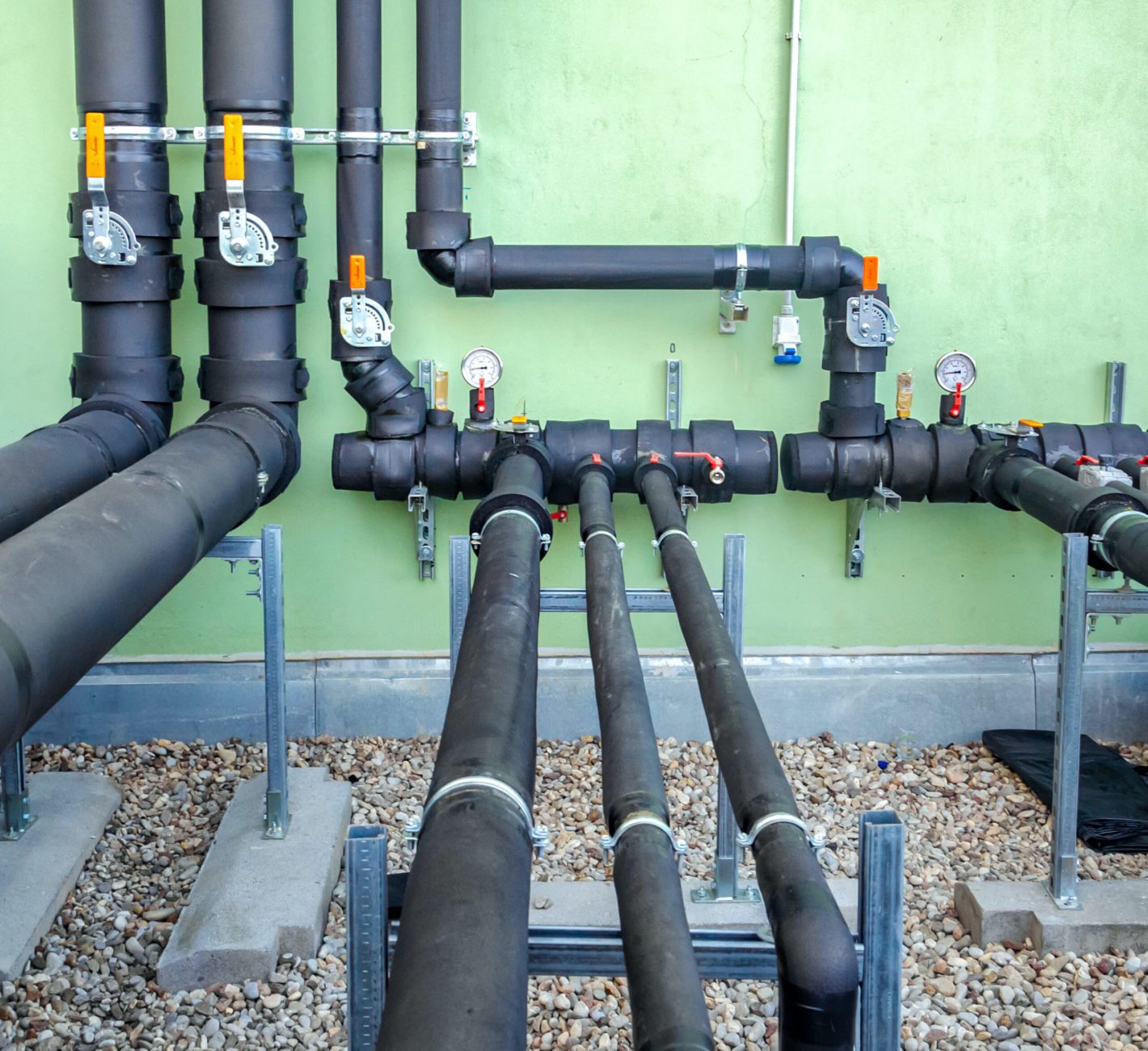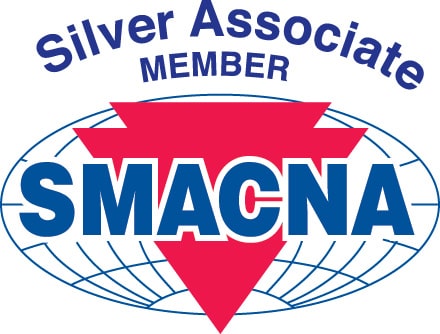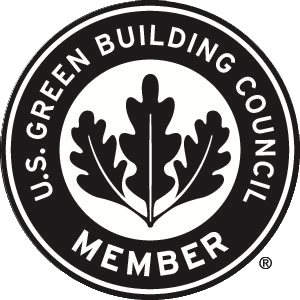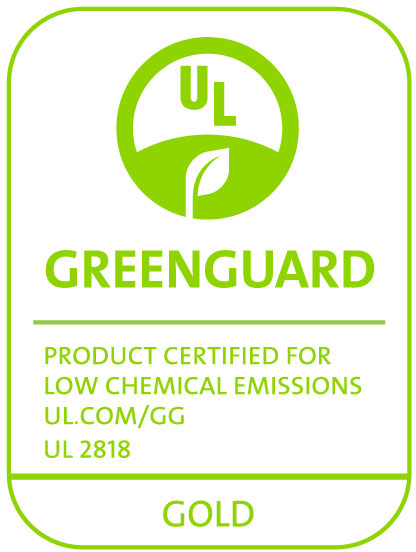
The need for UV resistant refrigerant line insulation is common for installations on building exteriors, such as rooftops, to convey refrigerants between large roof-top HVAC systems and interior equipment to provide conditioned air to the building’s occupant spaces and equipment.
U.S. commercial energy codes and standards, such as ASHRAE 90.1 Energy Standard for Buildings Except Low-Rise Residential Buildings, International Energy Conservation Code® (IECC®), require refrigerant lines to be insulated. The codes and standards do specify the UV resistant refrigerant line insulation thickness based on pipe size and line temperature, however, they do not specify the insulation type.
The energy codes and standards referenced above also require “protection from damage” when UV resistant refrigerant line insulation will be exposed to the weather. Factors that can damage refrigerant line insulation include sunlight, moisture, severe weather, equipment maintenance, varmints, and birds. Yes, birds love insulation for nest-building!
With so many types of UV resistant refrigerant line insulation to choose from (fiberglass, closed cell elastomeric thermal insulation, phenolic foam, polyisocyanurate, and cellular glass to name a few), how does a mechanical engineer choose the best UV resistant refrigerant line insulation for their client project?
While first costs (material and labor) are always a top concern to meet project budgets, other important factors such as energy efficiency, durability to exterior exposure, maintenance/repair, and replacement costs must also be evaluated when specifying UV resistant refrigerant line insulation.
Closed cell elastomeric rubber insulation has been a proven UV resistant refrigerant line insulation solution in the U.S. for close to 70 years. Due to its lightweight closed-cell structure, built-in vapor retarder, excellent condensation control performance, flexibility, favorable thermal conductivity, national availability, and moderate cost, closed cell elastomeric foam is often specified to insulate commercial and industrial refrigerant lines.
While other UV resistant refrigerant line insulation types do require protective jacketing for interior and exterior installations, elastomeric closed cell foam insulation does not require protective jacketing for most interior applications. However, flexible closed cell elastomeric thermal insulation can be subject to mechanical damage and UV degradation in exterior applications over time.
The following national and state energy standards, which are locally adopted, specifically require protection of insulation as follows:
IECC-2021 C403.12.3.1 Protection of piping insulation (Mandatory)
“Piping insulation exposed to the weather shall be protected from damage, including that caused by sunlight, moisture, equipment maintenance, and wind, and shall provide shielding from solar radiation that can cause degradation of the material. Adhesive tape shall not be permitted.”
ASHRAE 90.1-2019 6.3.2.l
“Insulation exposed to weather shall be suitable for outdoor service, e.g., protected by aluminum, sheet metal, painted canvas, or plastic cover. Cellular foam insulation shall be protected as above or painted with a coating that is water retardant and provides shielding from solar radiation.”
California Title 24 – 2019 4.4.1.2.F.2
“Cellular foam insulation shall be protected as above or painted with a coating that is water retardant and provides shielding from solar radiation that can cause degradation of the material.”
The most common closed cell flexible elastomeric foam UV resistant refrigerant line insulation is composed of a nitrile butadiene/PVC rubber (NBR/PVC) base which is subject to gradual UV degradation depending on the UV intensity that it is exposed to. Another UV resistant refrigerant line insulation option is Ethylene Propylene Diene Monomer (EPDM) which has greater UV resistance than NBR/PVC and degrades at a slower rate than NBR/PVC. For example, EPDM rubber is often selected as vehicle components due to its favorable durability and resistance to heat, condensation, and UV exposure.
When any closed cell elastomeric foam insulation is installed in an exterior setting, it should be protected from UV exposure to maximize the insulation’s life expectancy and life cycle costs for building owners. While the AEROFLEX® brand of closed cell EPDM elastomeric insulation will degrade at a slower rate than NBR, it is not UV-proof. EPDM protective options include mechanical jacketing (i.e. metal or PVC) or AEROFLEX® Aerocoat® and Aerocoat LVOC® UV-protective coatings for energy code compliance. Since Aerocoat coatings are specially formulated to protect EPDM rubber through expansion and contraction cycles with up to 400% elongation properties, it should not be substituted for standard white latex paint.
Aeroflex’s EPDM UV resistant refrigerant line insulation can deliver very favorable life cycle costs to building owners when properly protected from exterior elements. To learn more, visit https://aeroflexusa.com/aerocel-hvac-pipe-insulation.
Sources:
ASHRAE – https://www.ashrae.org/technical-resources/standards-and-guidelines/read-only-versions-of-ashrae-standards
IECC – https://codes.iccsafe.org/content/IECC2021P1/chapter-4-ce-commercial-energy-efficiency#IECC2021P1_CE_Ch04_SecC403
CA – https://www.energy.ca.gov/sites/default/files/2020-05/04_MechanicalSystems.pdf











